Development of High-Strength Geopolymer Concrete Incorporating High-Volume Copper Slag and Micro Silica
Abstract
:1. Introduction
2. Experimental Program
2.1. Class-F Fly Ash
2.2. Copper Slag
2.3. Silica Fume
2.4. River Sand
2.5. Coarse Aggregate
2.6. Alkaline Activators
3. Production of High-Strength Copper Slag-Based GPC with Micro Silica
4. Results and Discussion
4.1. Tests on Trial Mixes
4.1.1. Workability Test
4.1.2. Compressive Strength of HSGPC Trial Mixes
4.2. Evaluation of Optimized Mix
4.2.1. Compressive Strength
4.2.2. Splitting Tensile Strength
4.2.3. Ultrasonic Pulse Velocity
- µ = Poisson’s ratio,
- ρ = density in kg/m3 and
- v = velocity in m/s.
4.2.4. Water-Absorption Test
- W1 = Dry weight specimen in grams.
- W2 = Weight of sample after immersion in water for 30 min in grams.
- W3 = Weight of sample after immersion in water for 24 h in grams.
4.2.5. Sorptivity Tests
- Δw is the difference in weight of dry and immersed specimen = W2 − W1
- A = Surface area of the specimen through which water penetrated and
- d = density of fluid used.
4.3. Microstructural Studies on GPC
5. Conclusions
- The addition of high-volume copper slag resulted in a significant reduction in the workability of the concrete. The reduction in workability could be attributed to the irregular and angular particles present in the copper slag which, when mixed with the HSGPC, resulted in a harsh mixing.
- When the copper slag was used as a fine aggregate for the HSGPC, the compressive strength increased considerably up to 90% sand replacement. For the 100% copper slag replacement, the strength reduction was marginal when compared to the previous mix with 90% replacement.
- From the results of the workability and compressive strength, the optimum mix was selected to be the HSGPC mix with 100% copper slag. This GPC mix when added with micro silica showed an increase in compressive and tensile strength up to the 2% addition. After the 2% addition, the compressive and tensile strength showed a significant reduction.
- From the two curing methods adopted for the HSGPC specimens, the mix cured under the ambient condition showed the least compressive and tensile strength when compared to the steam-cured specimens. For the steam-cured GPC specimen with 100% copper slag, the compressive and tensile strength was 55.1 and 54.8% higher when compared to the tensile strength at the 28-day curing period.
- From the water absorption and sorptivity tests, it can be found that the HSGPC specimens with more than 2% micro silica showed a better performance in terms of low water ingress into the specimen.
- The microstructural analysis of the HSGPC specimens revealed the presence of characteristics, such as white deposits, pores, micro-cracks, Na-Al-Si-H gel and ITZ formation. Moreover, a number of unreacted fly ash particles were witnessed in the case of the ambient-cured GPC specimens due to the insufficient heat generally required to initiate the polymerization reaction.
Author Contributions
Funding
Institutional Review Board Statement
Informed Consent Statement
Data Availability Statement
Acknowledgments
Conflicts of Interest
References
- Ali, M.B.; Saidur, R.; Hossain, M.S. A review on emission analysis in cement industries. Renew. Sustain. Energy Rev. 2011, 15, 2252–2261. [Google Scholar] [CrossRef]
- Chen, C.; Xu, R.; Tong, D.; Qin, X.; Cheng, J.; Liu, J.; Zheng, B.; Yan, L.; Zhang, Q. A striking growth of CO2 emissions from the global cement industry driven by new facilities in emerging countries. Environ. Res. Lett. 2022, 17, 044007. [Google Scholar] [CrossRef]
- Gunasekaran, M.; Thangavel, M.; Nemichandran, N.K.; Ravikumar, I.; Glarance, H.J.; Kothandapani, K. Impact response and strength reliability of green high performance fibre reinforced concrete subjected to freeze-thaw cycles in NaCl solution. Medziagotyra 2017, 23, 384–388. [Google Scholar] [CrossRef] [Green Version]
- Berryman, C.; Zhu, J.; Jensen, W.; Tadros, M. High-percentage replacement of cement with fly ash for reinforced concrete pipe. Cem. Concr. Res. 2005, 35, 1088–1091. [Google Scholar] [CrossRef]
- Lo, F.C.; Lee, M.G.; Lo, S.L. Effect of coal ash and rice husk ash partial replacement in ordinary Portland cement on pervious concrete. Constr. Build. Mater. 2021, 286, 122947. [Google Scholar] [CrossRef]
- Chousidis, N.; Rakanta, E.; Ioannou, I.; Batis, G. Mechanical properties and durability performance of reinforced concrete containing fly ash. Constr. Build. Mater. 2015, 101, 810–817. [Google Scholar] [CrossRef]
- Asrani, N.P.; Murali, G.; Parthiban, K.; Surya, K.; Prakash, A.; Rathika, K.; Chandru, U. A feasibility of enhancing the impact resistance of hybrid fibrous geopolymer composites: Experiments and modelling. Constr. Build. Mater. 2019, 203, 56–68. [Google Scholar] [CrossRef]
- Asrani, N.P.; Murali, G.; Abdelgader, H.S.; Parthiban, K.; Haridharan, M.K.; Karthikeyan, K. Investigation on Mode I Fracture Behavior of Hybrid Fiber-Reinforced Geopolymer Composites. Arabian J. Sci. Eng. 2019, 44, 8545–8555. [Google Scholar] [CrossRef]
- Gopalakrishnan, R.; Chinnaraju, K. Durability of ambient cured alumina silicate concrete based on slag/fly ash blends against sulfate environment. Constr. Build. Mater. 2019, 204, 70–83. [Google Scholar] [CrossRef]
- Ibrahim, M.; Azmi, M.; Johari, M.; Maslehuddin, M.; Kalimur, M.; Abiodun, B.; Dafalla, H. Influence of composition and concentration of alkaline activator on the properties of natural-pozzolan based green concrete. Constr. Build. Mater. 2019, 201, 186–195. [Google Scholar] [CrossRef]
- Querol, X.; Plana, F.; Alastuey, A.; Moreno, N.; Izquierdo, M.; Font, O.; Moreno, T.; Diez, S.; Barra, M. Environmental, physical and structural characterisation of geopolymer matrixes synthesised from coal (co-)combustion fly ashes. J. Hazard. Mater. 2008, 154, 175–183. [Google Scholar] [CrossRef]
- Parthiban, K.; Murali, G.; Sreenath, S.; Krishna, A. Effect of Partial Replacement of Ground Granulated Blast Furnace Slag with Sugarcane Bagasse Ash as Source Material in the Production of Geopolymer Concrete. Mater. Sci. 2020, 26, 477–481. [Google Scholar]
- Zhang, J.; Provis, J.L.; Feng, D.; Van Deventer, J.S. Geopolymers for immobilization of Cr6+, Cd2+, and Pb2+. J. Hazard. Mater. 2008, 157, 587–598. [Google Scholar] [CrossRef] [PubMed]
- Abid, S.R.; Murali, G.; Amran, M.; Vatin, N.; Fediuk, R.; Karelina, M. Evaluation of Mode II Fracture Toughness of Hybrid Fibrous Geopolymer Composites. Materials 2021, 14, 349. [Google Scholar] [CrossRef]
- Ryu, G.S.; Lee, Y.B.; Koh, K.T.; Chung, Y.S. The mechanical properties of fly ash-based geopolymer concrete with alkaline activators. Constr. Build. Mater. 2013, 47, 409–418. [Google Scholar] [CrossRef]
- Suksiripattanapong, C.; Horpibulsuk, S.; Chanprasert, P.; Sukmak, P.; Arulrajah, A. Compressive strength development in fly ash geopolymer masonry units manufactured from water treatment sludge. Constr. Build. Mater. 2015, 82, 20–30. [Google Scholar] [CrossRef]
- Sumajouw, D.M.J.; Hardjito, D.; Wallah, S.E.; Rangan, B.V. Fly ash-based geopolymer concrete: Study of slender reinforced columns. J. Mater. Sci. 2007, 42, 3124–3130. [Google Scholar] [CrossRef]
- Ismail, I.; Bernal, S.A.; Provis, J.L.; San Nicolas, R.; Brice, D.G.; Kilcullen, A.R.; Hamdan, S.; Van Deventer, J.S.J. Influence of fly ash on the water and chloride permeability of alkali-activated slag mortars and concretes. Constr. Build. Mater. 2013, 48, 1187–1201. [Google Scholar] [CrossRef]
- Peng, Z.; Vance, K.; Dakhane, A.; Marzke, R.; Neithalath, N. Microstructural and 29Si MAS NMR spectroscopic evaluations of alkali cationic effects on fly ash activation. Cem. Concr. Compos. 2014, 57, 34–43. [Google Scholar] [CrossRef]
- Das, S.; Yang, P.; Singh, S.S.; Mertens, J.C.E.; Xiao, X.; Chawla, N.; Neithalath, N. Effective properties of a fly ash geopolymer: Synergistic application of X-ray synchrotron tomography, nanoindentation, and homogenization models. Cem. Concr. Res. 2015, 78, 252–262. [Google Scholar] [CrossRef]
- Cyr, M.; Pouhet, R. Carbonation in the pore solution of metakaolin-based geopolymer. Cem. Concr. Res. 2016, 88, 227–235. [Google Scholar] [CrossRef]
- Gharzouni, A.; Joussein, E.; Samet, B.; Baklouti, S.; Rossignol, S. Effect of the reactivity of alkaline solution and metakaolin on geopolymer formation. J. Non-Cryst. Solids 2015, 410, 127–134. [Google Scholar] [CrossRef]
- Kuenzel, C.; Li, L.; Vandeperre, L.; Boccaccini, A.R.; Cheeseman, C.R. Influence of sand on the mechanical properties of metakaolin geopolymers. Constr. Build. Mater. 2014, 66, 442–446. [Google Scholar] [CrossRef]
- Karthik, S.; Mohan, K.S.R.; Murali, G. Investigations on the response of novellayered geopolymer fibrous concrete to drop weight impact. Buildings 2022, 12, 100. [Google Scholar] [CrossRef]
- Cheng, H.; Lin, K.L.; Cui, R.; Hwang, C.L.; Cheng, T.W.; Chang, Y.M. Effect of solid-to-liquid ratios on the properties of waste catalyst-metakaolin based geopolymers. Constr. Build. Mater. 2015, 88, 74–83. [Google Scholar] [CrossRef]
- Shah, A. Optimum Utilization of GGBS in Fly Ash based Geopolymer Concrete. Kalpa Publ. Civ. Eng. 2018, 1, 431–440. [Google Scholar] [CrossRef] [Green Version]
- Das, S.K.; Mustakim, S.M.; Adesina, A.; Mishra, J.; Alomayri, T.S.; Assaedi, H.S.; Kaze, C.R. Fresh, strength and microstructure properties of geopolymer concrete incorporating lime and silica fume as replacement of fly ash. J. Build. Eng. 2020, 32, 101780. [Google Scholar] [CrossRef]
- Bajpai, R.; Choudhary, K.; Srivastava, A.; Sangwan, K.S.; Singh, M. Environmental impact assessment of fly ash and silica fume based geopolymer concrete. J. Clean. Prod. 2020, 254, 120147. [Google Scholar] [CrossRef]
- Preethi, P.; Sintha, N.; Prithivi Raj, M.; Tamilarasan, K.; Vinith, R. Exploration on geopolymer concrete using GGBS and silica fume. Mater. Today Proc. 2020. [Google Scholar] [CrossRef]
- Krishna Rao, A.; Rupesh Kumar, D. Comparative study on the behaviour of GPC using silica fume and fly ash with GGBS exposed to elevated temperature and ambient curing conditions. Mater. Today Proc. 2020, 27, 1833–1837. [Google Scholar] [CrossRef]
- Shakouri, S.; Bayer, Ö.; Erdoğan, S.T. Development of silica fume-based geopolymer foams. Constr. Build. Mater. 2020, 260, 120442. [Google Scholar] [CrossRef]
- Wang, Y.C.; Zhao, J.P.; Chen, J. Effect of polydimethylsiloxane viscosity on silica fume-based geopolymer hybrid coating for flame-retarding plywood. Constr. Build. Mater. 2020, 239, 117814. [Google Scholar] [CrossRef]
- Adak, D.; Sarkar, M.; Mandal, S. Structural performance of nano-silica modified fly-ash based geopolymer concrete. Constr. Build. Mater. 2017, 135, 430–439. [Google Scholar] [CrossRef]
- Okoye, F.N.; Durgaprasad, J.; Singh, N.B. Effect of silica fume on the mechanical properties of fly ash based-geopolymer concrete. Ceram. Int. 2016, 42, 3000–3006. [Google Scholar] [CrossRef]
- Agrawal, U.S.; Wanjari, S.P.; Naresh, D.N. Impact of replacement of natural river sand with geopolymer fly ash sand on hardened properties of concrete. Constr. Build. Mater. 2019, 209, 499–507. [Google Scholar] [CrossRef]
- Saviour, N.M. Naveen Saviour Environmental Impact of Soil and Sand Mining: A Review. Int. J. Sci. Environ. 2012, 1, 125–134. [Google Scholar]
- Aldemir, A.; Akduman, S.; Kocaer, O.; Aktepe, R.; Sahmaran, M.; Yildirim, G.; Almahmood, H.; Ashour, A. Shear behaviour of reinforced construction and demolition waste-based geopolymer concrete beams. J. Build. Eng. 2022, 47, 103861. [Google Scholar] [CrossRef]
- Mithun, B.M.; Narasimhan, M.C. Performance of alkali activated slag concrete mixes incorporating copper slag as fine aggregate. J. Clean. Prod. 2016, 112, 837–844. [Google Scholar] [CrossRef]
- Gomes Silveira, N.C.; Figueiredo Martins, M.L.; da Bezerra, A.C.S.; da Silva Araújo, F.G. Ecological geopolymer produced with a ternary system of red mud, glass waste, and Portland cement. Clean. Eng. Technol. 2022, 6, 100379. [Google Scholar] [CrossRef]
- Fořt, J.; Novotný, R.; Vejmelková, E.; Trník, A.; Rovnaníková, P.; Keppert, M.; Pommer, V.; Černý, R. Characterization of geopolymers prepared using powdered brick. J. Mater. Res. Technol. 2019, 8, 6253–6261. [Google Scholar] [CrossRef]
- Guo, X.; Yang, J. Intrinsic properties and micro-crack characteristics of ultra-high toughness fly ash/steel slag based geopolymer. Constr. Build. Mater. 2020, 230, 116965. [Google Scholar] [CrossRef]
- Gong, W.; Chen, Q.; Miao, J. Bond behaviors between copper slag concrete and corroded steel bar after exposure to high temperature. J. Build. Eng. 2021, 44, 103312. [Google Scholar] [CrossRef]
- Resende, C.; Cachim, P.; Bastos, A.M. Copper slag mortar properties. Mater. Sci. Forum 2008, 587–588, 862–866. [Google Scholar] [CrossRef]
- Singh, J.; Singh, S.P. Development of Alkali-activated Cementitious Material using Copper Slag. Constr. Build. Mater. 2019, 211, 73–79. [Google Scholar] [CrossRef]
- Madheswaran, C.K.; Ambily, P.S.; Dattatreya, J.K.; Rajamane, N.P. Studies on use of Copper Slag as Replacement Material for River Sand in Building Constructions. J. Inst. Eng. Ser. A 2014, 95, 169–177. [Google Scholar] [CrossRef] [Green Version]
- Ambily, P.S.; Umarani, C.; Ravisankar, K.; Prem, P.R.; Bharatkumar, B.H.; Iyer, N.R. Studies on ultra high performance concrete incorporating copper slag as fine aggregate. Constr. Build. Mater. 2015, 77, 233–240. [Google Scholar] [CrossRef]
- Sudarvizhi, M.; Ilangovan, R. Performance of Copper slag and ferrous slag as partial replacement of sand in Concrete. Int. J. Civ. 2011, 1, 918–927. [Google Scholar]
- Brindha, D.; Nagan, S. Durability studies on copper slag admixed concrete. Asian J. Civ. Eng. 2011, 12, 563–578. [Google Scholar]
- Palani, T.; Jaya, K.P.; Muthumani, K. Studies on copper slag substitution for sand in high strength concrete. J. Struct. Eng. 2014, 41, 293–306. [Google Scholar]
- Al-Jabri, K.S.; Al-Saidy, A.H.; Taha, R. Effect of copper slag as a fine aggregate on the properties of cement mortars and concrete. Constr. Build. Mater. 2011, 25, 933–938. [Google Scholar] [CrossRef]
- Sharma, R.; Khan, R.A. Sustainable use of copper slag in self-compacting concrete containing supplementary cementitious materials. J. Clean. Prod. 2017, 151, 179–192. [Google Scholar] [CrossRef]
- Sivasakthi, M.; Jeyalakshmi, R.; Rajamane, N.P. Fly ash geopolymer mortar: Impact of the substitution of river sand by copper slag as a fine aggregate on its thermal resistance properties. J. Clean. Prod. 2021, 279, 123766. [Google Scholar] [CrossRef]
- Bell, J.L.; Sarin, P.; Provis, J.L.; Haggerty, R.P.; Driemeyer, P.E.; Chupas, P.J.; Van Deventer, J.S.; Kriven, W.M. Atomic structure of a cesium aluminosilicate geopolymer: A pair distribution function study. Chem. Mater. 2008, 20, 4768–4776. [Google Scholar] [CrossRef]
- Aguirre-guerrero, A.M.; Robayo-salazar, R.A.; De Gutiérrez, R.M. Applied Clay Science A novel geopolymer application: Coatings to protect reinforced concrete against corrosion. Appl. Clay Sci. 2017, 135, 437–446. [Google Scholar] [CrossRef]
- Guo, X.; Hu, W.; Shi, H. Microstructure and self-solidification/stabilization (S/S) of heavy metals of nano-modified CFA—MSWIFA composite geopolymers. Constr. Build. Mater. 2014, 56, 81–86. [Google Scholar] [CrossRef]
- Kim, B.; Lee, J.; Kang, J.; Um, W. Development of geopolymer waste form for immobilization of radioactive borate waste. J. Hazard. Mater. 2021, 419, 126402. [Google Scholar] [CrossRef]
- Mahmed, N.; Nor, S.; Zailan, S.; Al-bakri, M.M. Influence of TiO2 nanoparticles (wt %) onto the physical and mechanical properties of the TiO2-geopolymer paste. In IOP Conference Series: Materials Science and Engineering; IOP Publishing: Bristol, UK, 2020. [Google Scholar] [CrossRef]
- Nasvi, M.C.M.; Rathnaweera, T.D.; Padmanabhan, E. Geopolymer as well cement and its mechanical integrity under deep down-hole stress conditions: Application for carbon capture and storage wells. Geomech. Geophys. Geo-Energy Geo-Resour. 2016, 2, 245–256. [Google Scholar] [CrossRef] [Green Version]
- Wu, Y.; Lu, B.; Yi, Z.; Du, F.; Zhang, Y. The Properties and Latest Application of The Properties and Latest Application of Geopolymers; Elsevier: Amsterdam, The Netherlands, 2019. [Google Scholar] [CrossRef]
- Zhang, Z.; Wang, K.; Mo, B.; Li, X.; Cui, X. Preparation and characterization of a reflective and heat insulative coating based on geopolymers. Energy Build. 2015, 87, 220–225. [Google Scholar] [CrossRef]
- Provis, J.L. Immobilisation of toxic wastes in geopolymers. In Geopolymers: Structures, Processing, Properties and Industrial Applications; Woodhead Publishing: Cambridge, UK, 2009; pp. 421–440. [Google Scholar] [CrossRef]
- ASTM. Standard Specification for Coal Fly-Ash and Raw or Calcined Natural Pozzolan for Use; Annual Book of ASTM Standards: Philadelphia, PA, USA, 2010; pp. 3–6. [Google Scholar]
- Wang, J.; Erdenbold, U. A study on reduction of copper smelting slag by carbon for recycling into metal values and cement raw material. Sustainability 2020, 12, 1421. [Google Scholar] [CrossRef] [Green Version]
- Tixier, R.; Devaguptapu, R.; Mobasher, B. The Effect of Copper Slag on the Hydration and Mechanical Properties of Cementitious Mixtures. Cem. Concr. Res. 1997, 27, 1569–1580. [Google Scholar] [CrossRef]
- Moeini, M.A.; Bagheri, M.; Joshaghani, A.; Ramezanianpour, A.A.; Moodi, F. Feasibility of Alkali-Activated Slag Paste as Injection Material for Rehabilitation of Concrete Structures. J. Mater. Civ. Eng. 2018, 30, 04018252. [Google Scholar] [CrossRef]
- Maddalena, R.; Hall, C.; Hamilton, A. Effect of silica particle size on the formation of calcium silicate hydrate [C-SH] using thermal analysis. Thermochim. Acta. 2019, 672, 142–149. [Google Scholar] [CrossRef]
- Najimi, M.; Sobhani, J.; Pourkhorshidi, A.R. Durability of copper slag contained concrete exposed to sulfate attack. Constr. Build. Mater. 2011, 25, 1895–1905. [Google Scholar] [CrossRef]
- IS 383; Coarse and Fine Aggregate for Concrete—Specification. Bureau of Indian Standards: New Delhi, India, 2016; pp. 1–30.
- Rajamane, J.R. Quantities of Sodium Hydroxide Solids and Water to Prepare Sodium Hydroxide Solution of Given Molarity for Geopolymer Concrete Mixes; ICI Technical Paper; SRM University: Kattankulathur, India, 2014; pp. 4–9. [Google Scholar]
- Pavithra, P.; Reddy, M.S.; Dinakar, P.; Rao, B.H.; Satpathy, B.H.; Mohanty, A.N. A mix design procedure for geopolymer concrete with fly-ash. J. Clean. Prod. 2016, 133, 117–125. [Google Scholar] [CrossRef]
- Adam, A.A.; Horianto, X.X.X. The effect of temperature and duration of curing on the strength of fly-ash based geopolymer mortar. Procedia Eng. 2014, 95, 410–414. [Google Scholar] [CrossRef] [Green Version]
- Nuruddin, M.F.; Demie, S.; Ahmed, M.F.; Shafiq, N. Effect of superplasticizer and NaOH molarity on workability, compressive strength and microstructure properties of self-compacting geopolymer concrete. World Acad. Sci. Eng. Technol. 2011, 51, 907–914. [Google Scholar]
- Jithendra, C.; Elavenil, S. Role of superplasticizer on GGBS based Geopolymer concrete under ambient curing. Mater. Today Proc. 2019, 18, 148–154. [Google Scholar] [CrossRef]
- Lǎzǎrescu, A.V.; Szilagyi, H.; Baerǎ, C.; Ioani, A. The Effect of Alkaline Activator Ratio on the Compressive Strength of Fly-ash-based Geopolymer Paste. In IOP Conference Series: Materials Science and Engineering; IOP Publishing: Bristol, UK, 2017; Volume 209. [Google Scholar]
- Oyebisi, S.; Ede, A.; Olutoge, F.; Igba, T.; Oluwafemi, J. Effects of rest period on the strength performance of geopolymer concrete. In IOP Conference Series: Materials Science and Engineering; IOP Publishing: Bristol, UK, 2019; Volume 640. [Google Scholar]
- IS 516; Method of Tests for Strength of Concrete. Bureau of Indian Standards: New Delhi, India, 1959; pp. 1–30.
- IS 5816; Splitting Tensile Strength of Concrete—Method of Test. Bureau of Indian Standards: New Delhi, India, 1999; pp. 1–14.
- ASTM C-1585-04; Standard Test Method for Measurement of Rate of Absorption of Water by Hydraulic—Cement Concretes. American Society for Testing and Materials: West Conshohocken, PA, USA, 2020; pp. 1–6.
- Kai, M.F.; Dai, J.G. Understanding geopolymer binder-aggregate interfacial characteristics at molecular level. Cem. Concr. Res. 2021, 149, 106582. [Google Scholar] [CrossRef]
- Ren, X.; Zhang, L. Experimental study of interfacial transition zones between geopolymer binder and recycled aggregate. Constr. Build. Mater. 2018, 167, 749–756. [Google Scholar] [CrossRef]



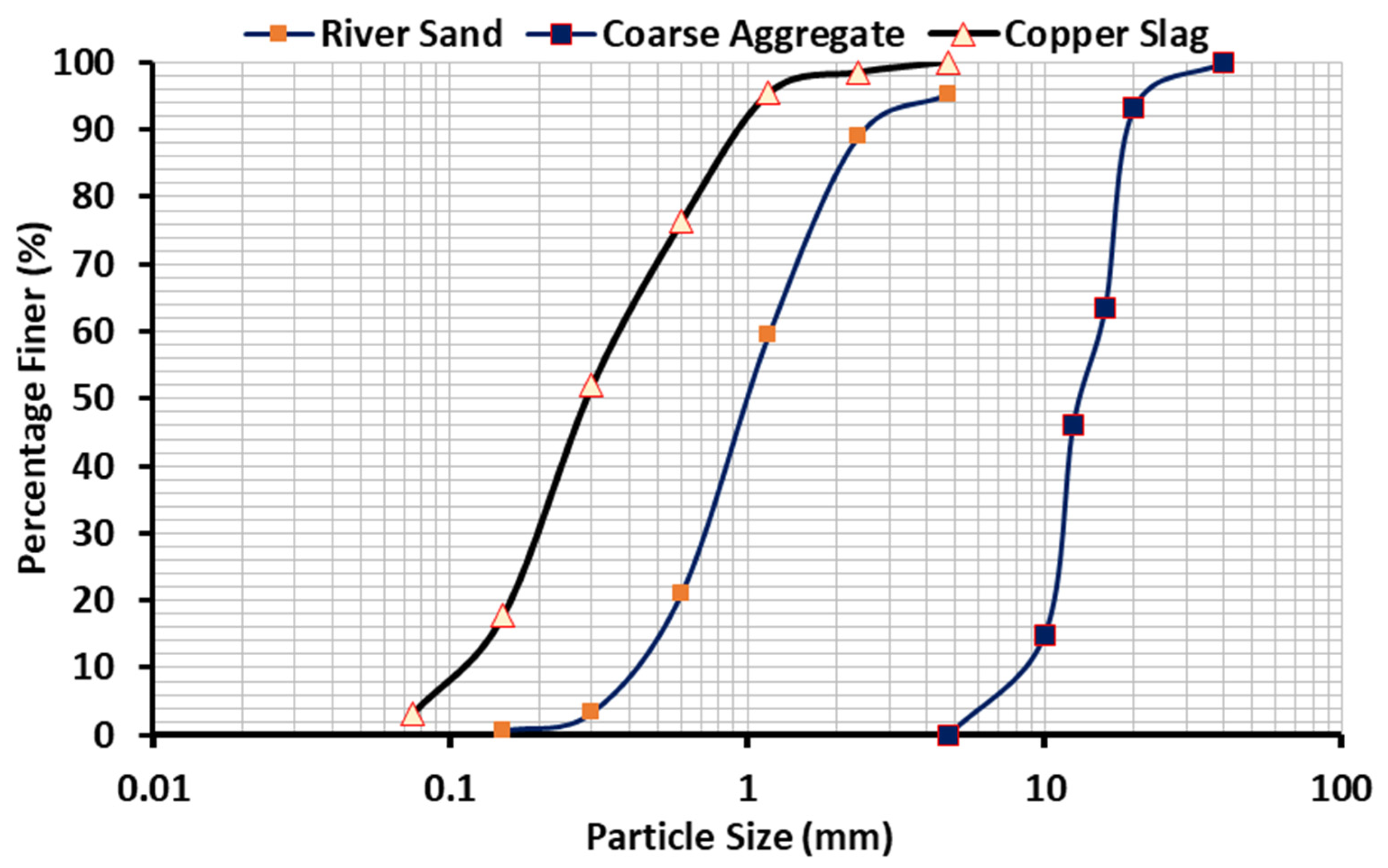
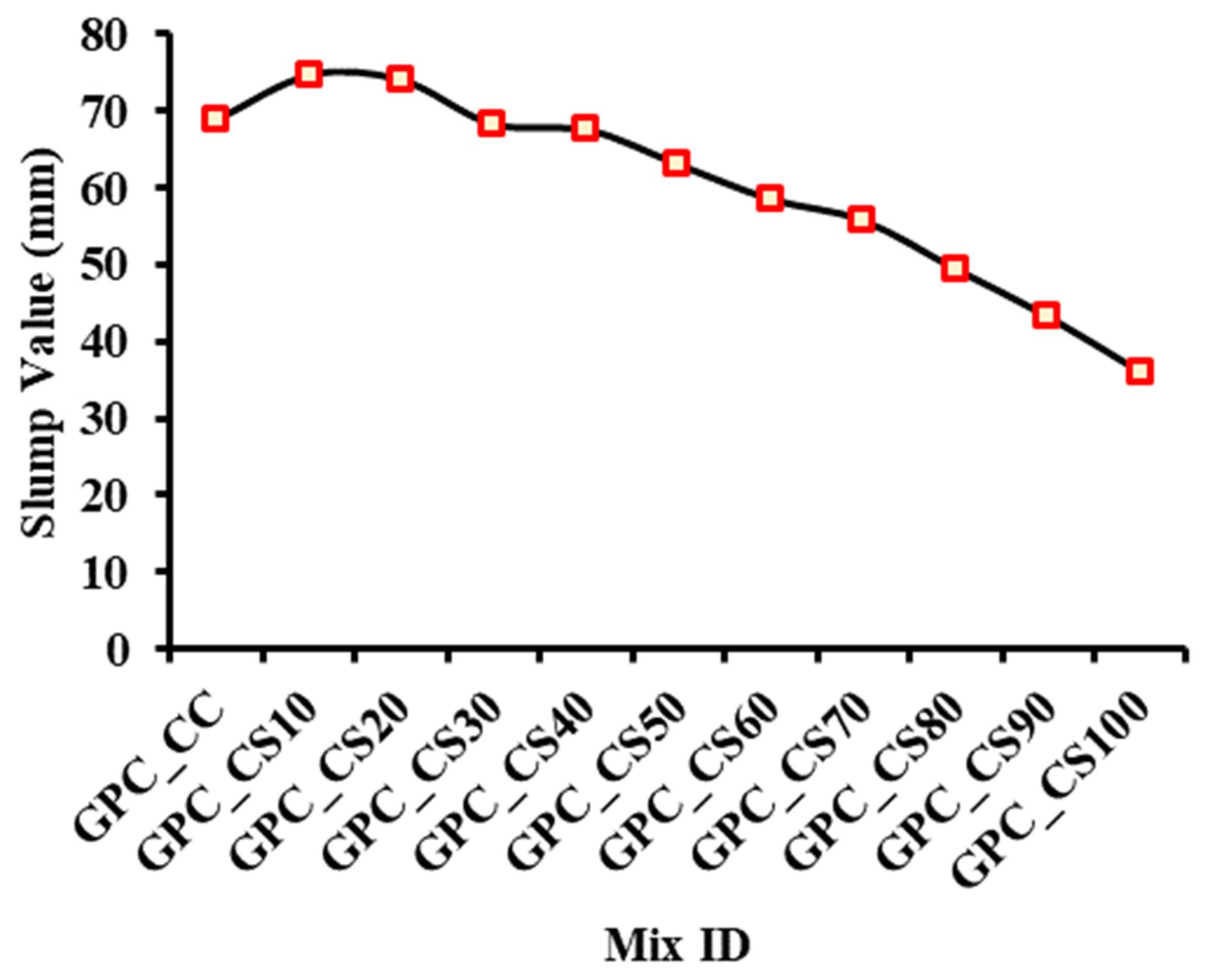
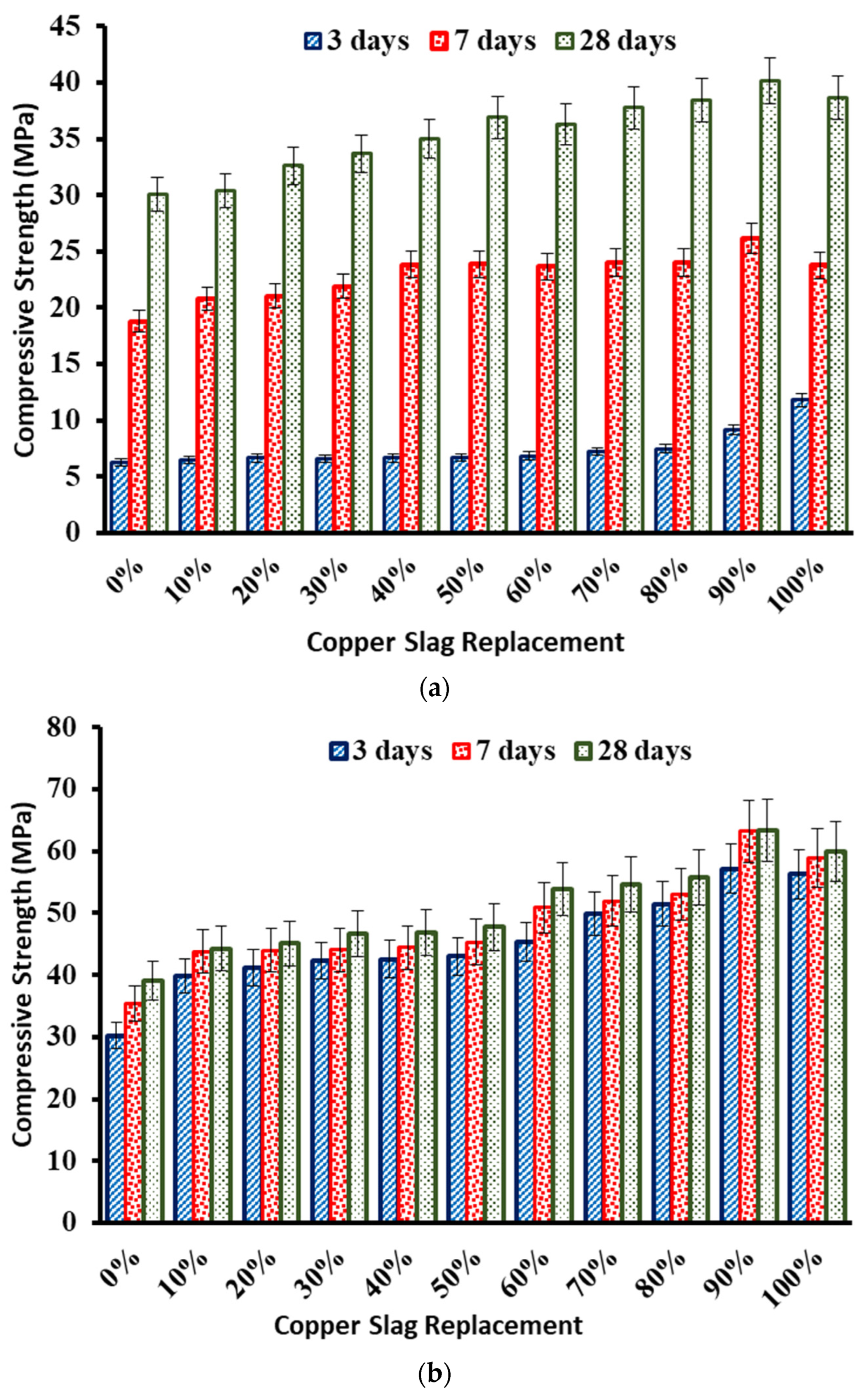

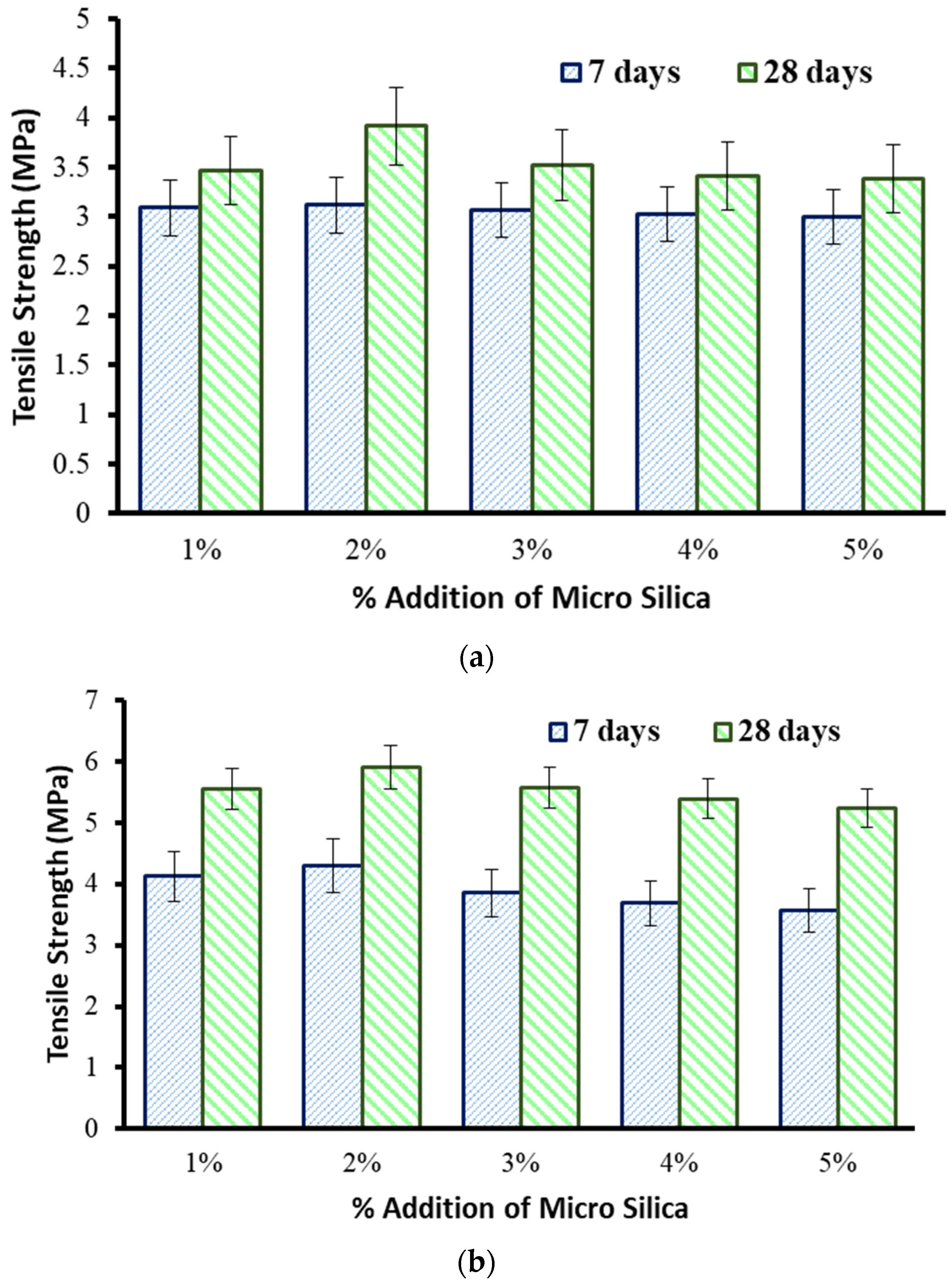
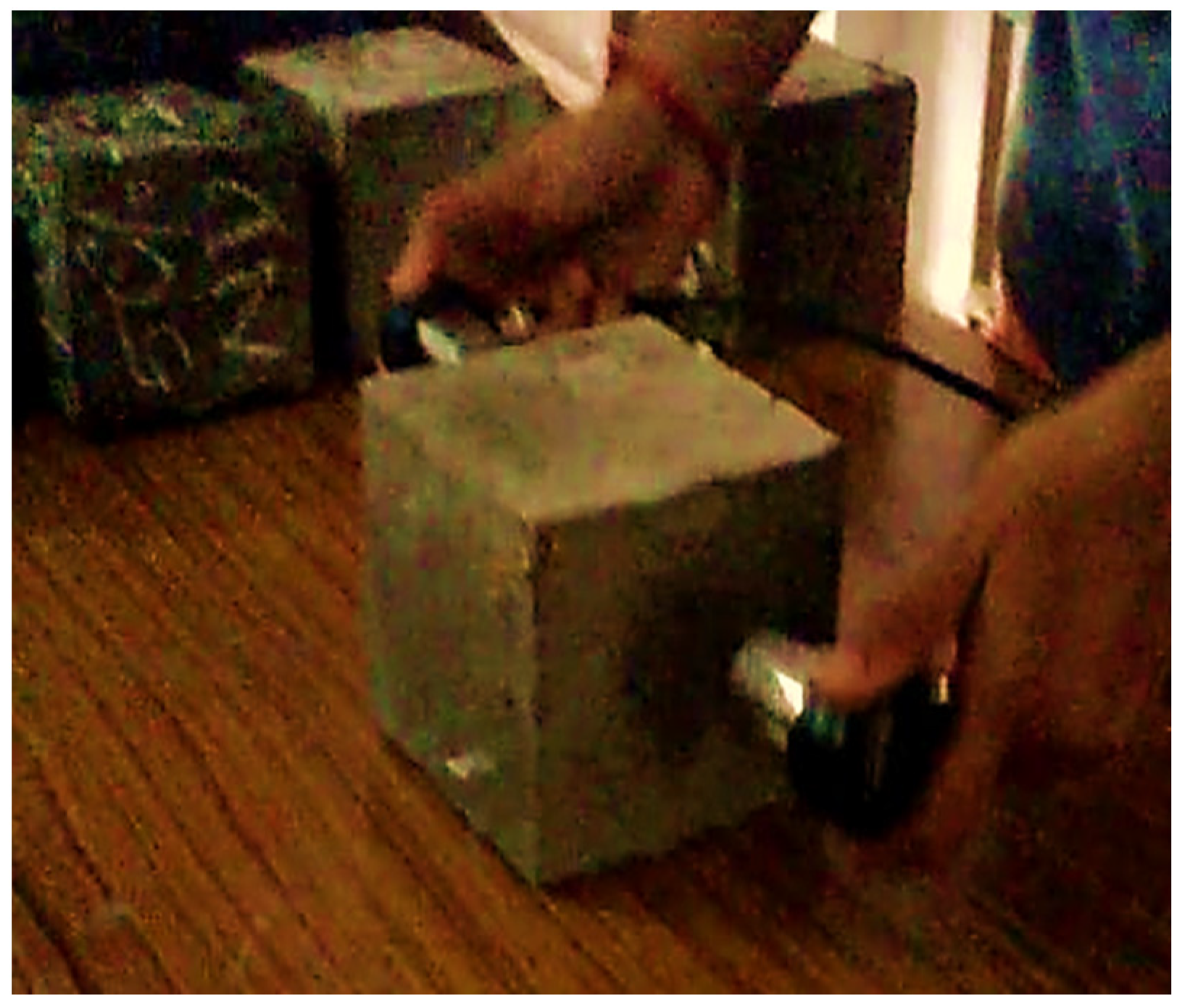
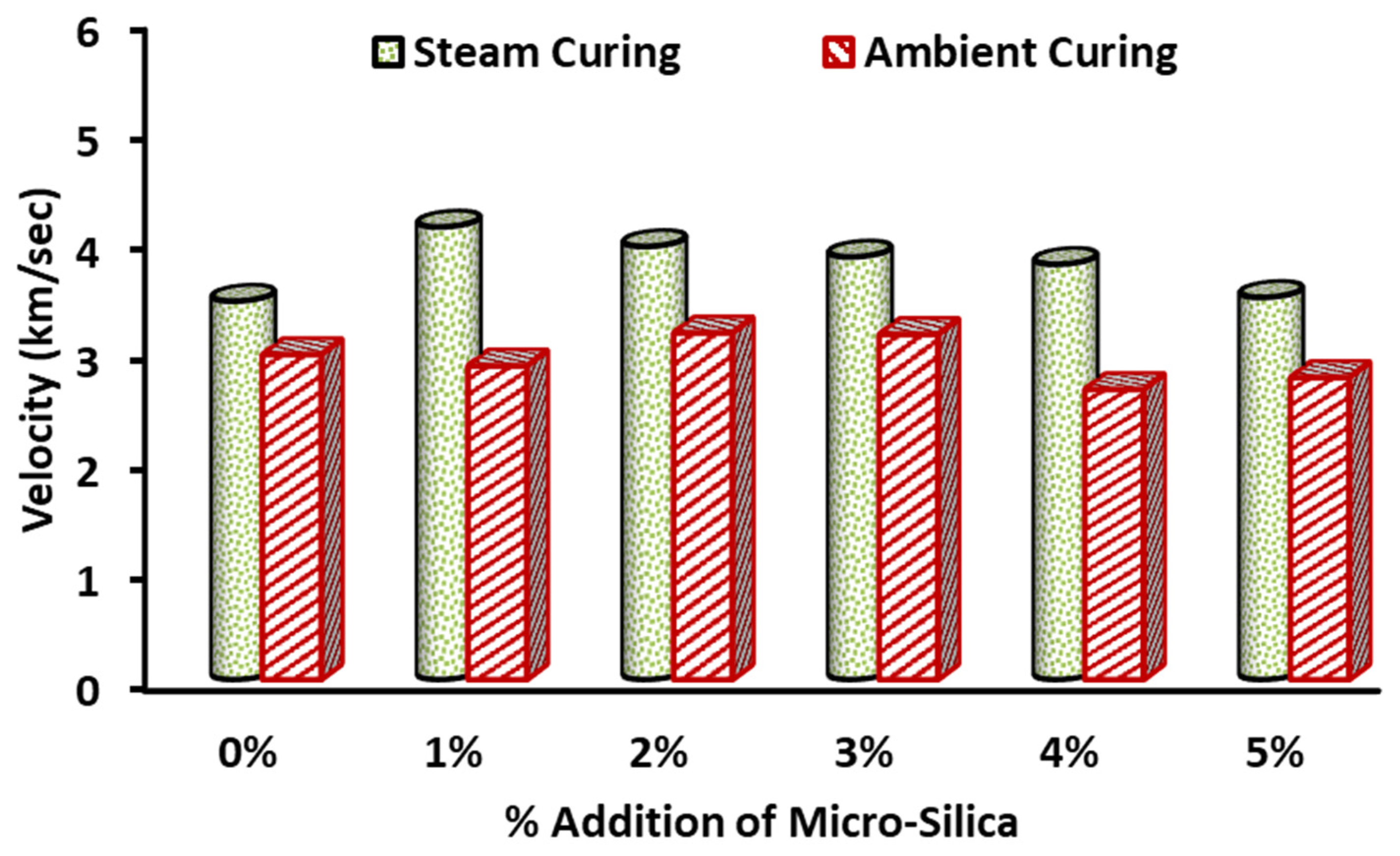

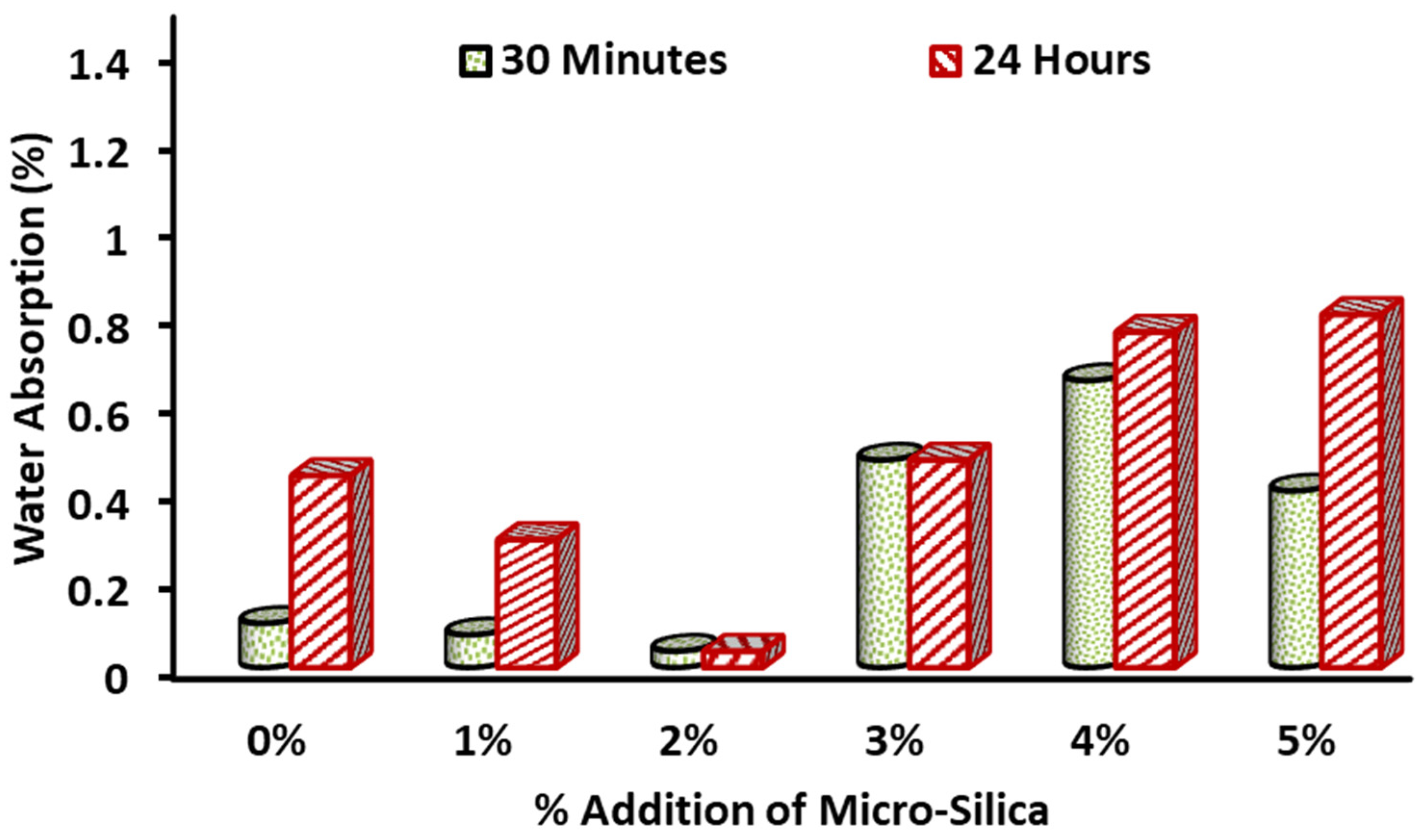
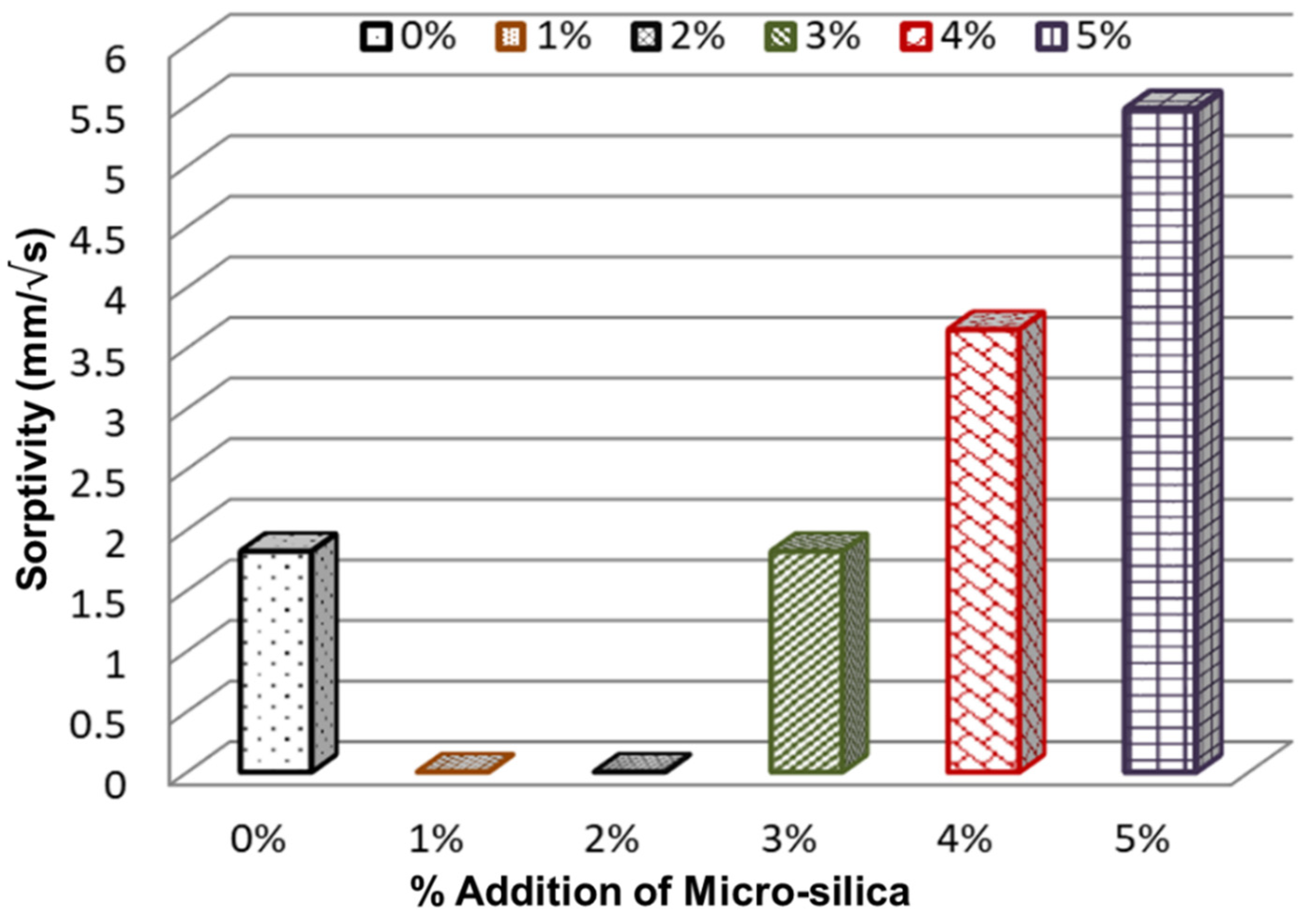


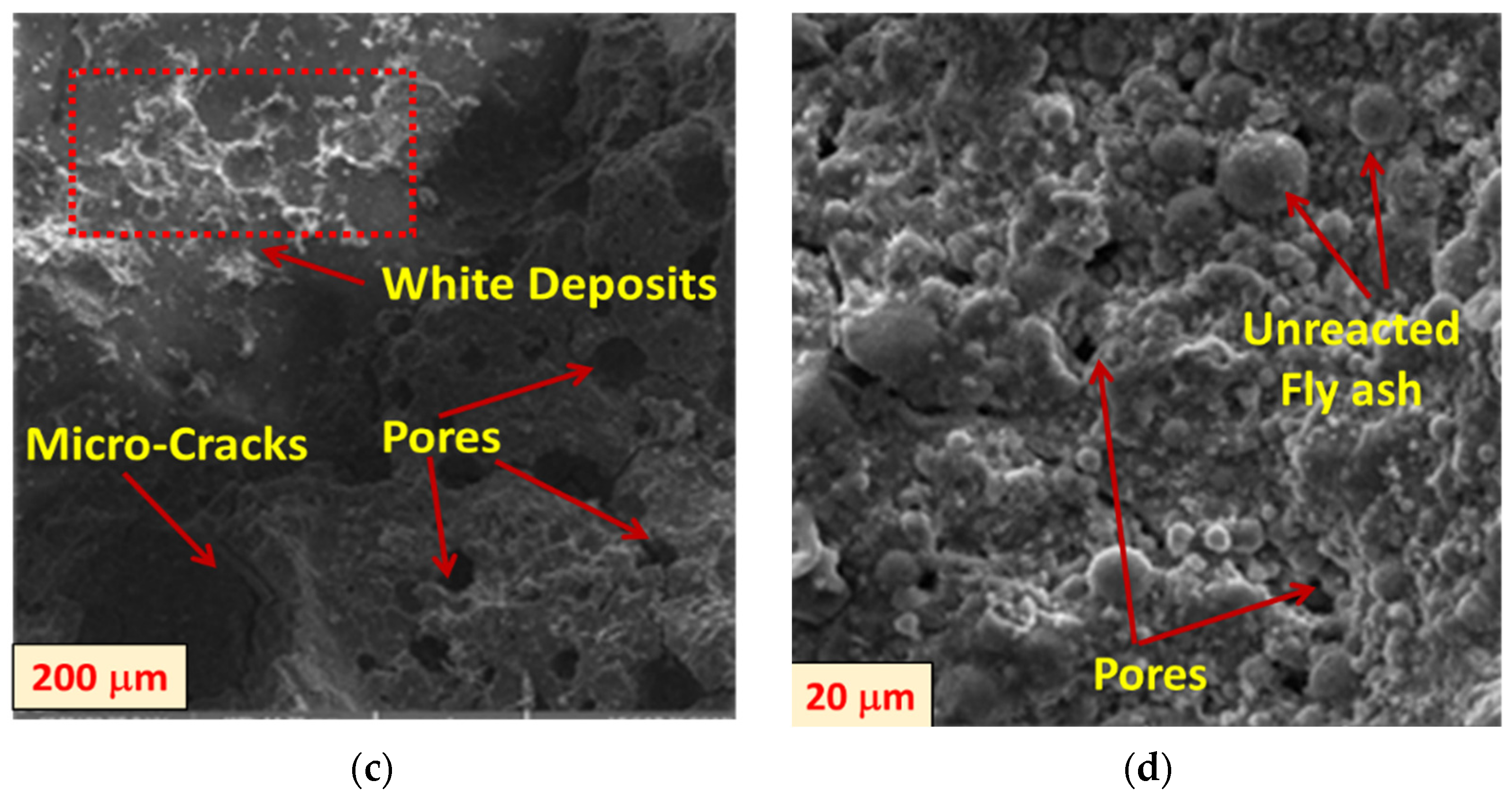

| Components | Fly Ash | Copper Slag |
|---|---|---|
| Silica (SiO2) | 69.583 | 44.382 |
| Alumina (Al2O3) | 14.825 | 3.169 |
| Reference Iron oxide (Fe2O3) | 3.313 | 42.942 |
| Calcium oxide (CaO) | 4.510 | 2.356 |
| Magnesium oxide (MgO) | 1.620 | 4.251 |
| Sodium oxide (Na2O) | 4.723 | 0.030 |
| Sulphur tri-oxide (SO3) | 0.497 | 2.573 |
| Loss of Ignition | 0.929 | 0.297 |
| Mix ID | M0 | M1 | M2 | M3 | M4 | M5 | M6 | M7 | M8 | M9 | M10 |
|---|---|---|---|---|---|---|---|---|---|---|---|
| Materials * | 0% | 10% | 20% | 30% | 40% | 50% | 60% | 70% | 80% | 90% | 100% |
| Copper Slag * | 0 | 94 | 188 | 282 | 376 | 470 | 564 | 658 | 752 | 846 | 940 |
| River Sand * | 613 | 551 | 490 | 429 | 367 | 306 | 245 | 183 | 122 | 61 | 0 |
| NaOH * | 53 | ||||||||||
| Na2SiO3 * | 132.5 | ||||||||||
| Fly ash * | 480 | ||||||||||
| C.A * | 1139 | ||||||||||
| Mix ID | Slump (mm) | Compressive Strength for Ambient-Cured GPC (Mpa) | Compressive Strength for Steam-Cured GPC (Mpa) | ||||
|---|---|---|---|---|---|---|---|
| 3 Days | 7 Days | 28 Days | 3 Days | 7 Days | 28 Days | ||
| GPC_CC | 69 | 6.3 | 18.79 | 30.08 | 30.23 | 35.38 | 39.08 |
| GPC_CS10 | 75 | 6.49 | 20.77 | 30.42 | 39.81 | 43.75 | 44.27 |
| GPC_CS20 | 74 | 6.64 | 21.03 | 32.59 | 41.15 | 43.98 | 45.13 |
| GPC_CS30 | 68 | 6.61 | 21.89 | 33.68 | 42.30 | 44.01 | 46.67 |
| GPC_CS40 | 68 | 6.64 | 23.81 | 35.01 | 42.56 | 44.4 | 46.89 |
| GPC_CS50 | 63 | 6.71 | 23.85 | 36.89 | 43.01 | 45.32 | 47.74 |
| GPC_CS60 | 59 | 6.83 | 23.68 | 36.32 | 45.32 | 50.86 | 53.91 |
| GPC_CS70 | 56 | 7.23 | 24.01 | 37.76 | 49.86 | 51.96 | 54.63 |
| GPC_CS80 | 50 | 7.45 | 23.99 | 38.43 | 51.49 | 53.00 | 55.76 |
| GPC_CS90 | 43 | 9.15 | 26.14 | 40.17 | 57.18 | 63.21 | 63.4 |
| GPC_CS100 | 36 | 11.83 | 23.67 | 38.66 | 56.29 | 58.9 | 59.95 |
Publisher’s Note: MDPI stays neutral with regard to jurisdictional claims in published maps and institutional affiliations. |
© 2022 by the authors. Licensee MDPI, Basel, Switzerland. This article is an open access article distributed under the terms and conditions of the Creative Commons Attribution (CC BY) license (https://creativecommons.org/licenses/by/4.0/).
Share and Cite
Arunachelam, N.; Maheswaran, J.; Chellapandian, M.; Murali, G.; Vatin, N.I. Development of High-Strength Geopolymer Concrete Incorporating High-Volume Copper Slag and Micro Silica. Sustainability 2022, 14, 7601. https://doi.org/10.3390/su14137601
Arunachelam N, Maheswaran J, Chellapandian M, Murali G, Vatin NI. Development of High-Strength Geopolymer Concrete Incorporating High-Volume Copper Slag and Micro Silica. Sustainability. 2022; 14(13):7601. https://doi.org/10.3390/su14137601
Chicago/Turabian StyleArunachelam, Nagarajan, Jeyaprakash Maheswaran, Maheswaran Chellapandian, Gunasekaran Murali, and Nikolai Ivanovich Vatin. 2022. "Development of High-Strength Geopolymer Concrete Incorporating High-Volume Copper Slag and Micro Silica" Sustainability 14, no. 13: 7601. https://doi.org/10.3390/su14137601
APA StyleArunachelam, N., Maheswaran, J., Chellapandian, M., Murali, G., & Vatin, N. I. (2022). Development of High-Strength Geopolymer Concrete Incorporating High-Volume Copper Slag and Micro Silica. Sustainability, 14(13), 7601. https://doi.org/10.3390/su14137601










